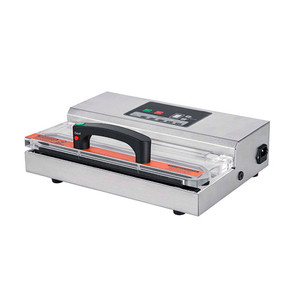
The Weston® Wet & Dry Vacuum Sealer has an innovative dual-stage design that quickly and consistently seals liquids like stews and fruit purees, plus efficiently seals dry foods too. Includes built-in date coder, 2 roll storage, and starter kit.
Consistent Results
Innovative dual-stage design seals liquid foods like stews, sauces and fruit purees fast without having to freeze them first, saving you time in the kitchen. You get consistently great results every time you seal a bag.
Patent-Pending, Integrated Date Coder
Heat-stamps the date onto the bag to save you time. No marking required and no risk of the date rubbing off.
Save Money and Reduce Food Waste
Reduce food waste and save up to $2,275 per year.* Great for preserving fresh produce, meat bought in bulk, leftovers, foods and drinks for travel, and more.
Built-In Convenience
The built-in storage compartment neatly stores 2 different sizes of rolls, ensuring you always have the right size vacuum sealer bags for the job. Cut bags to size quickly with the built-in cutter.
Designed to Seal Liquids and Larger Items
The seal bar is elevated so it's easier and more convenient to seal liquid foods and larger items. The extra-wide vacuum chamber makes bag alignment easier.
Starter Kit Included
The kit has everything you need to get started. Includes BPA-free 8 x 22' roll, 11 x 18' roll, 6 Weston Stand-Up Quart Bags, and an accessory hose. Safe for freezer, refrigerator and sous vide cooking.
Seals Delicate Foods
The pulse button gives you greater control when sealing delicate items like chips or pretzels.
Includes 5 Year Limited Warranty
The vacuum sealer is designed to last and backed by Weston with a lengthy 5 year limited warranty.
Easy-to-Clean Touchpad Controls
The smooth touchpad is easy to wipe clean.
*The average American household of four throws away up to $2,275 of food each year,
according to the National Resources Defense Council (Wasted, 2012).












